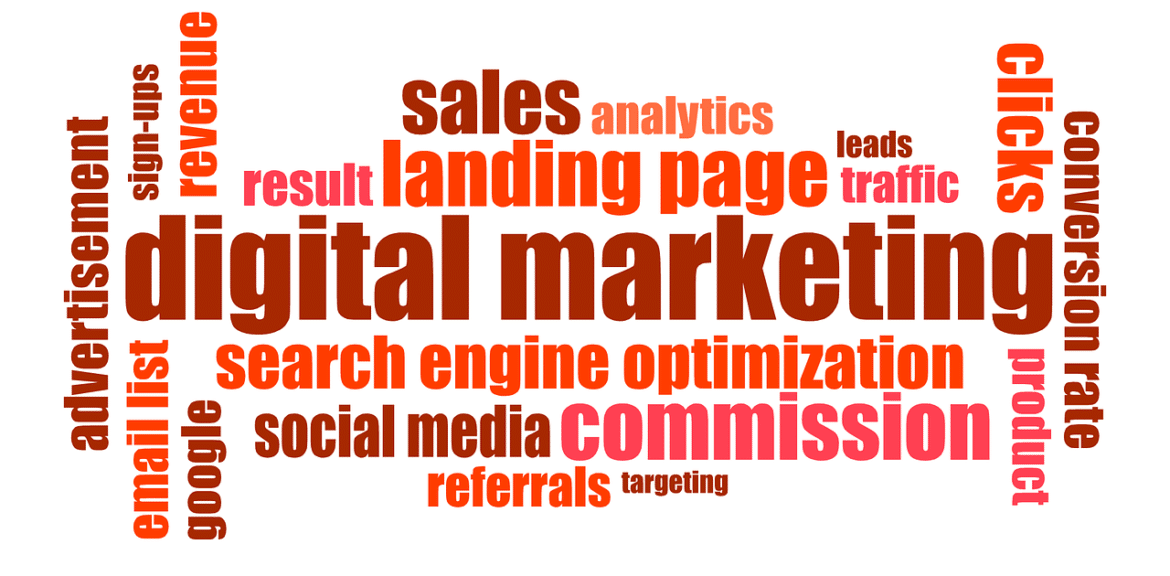
Did you know that more than 72% of businesses haven’t reviewed their marketing campaigns in over a month? And that’s only the beginning. Far too many businesses fail to evaluate their digital marketing performance, frequently because they are unsure how to quantify success.
Without continual measurement and monitoring, your budget will go straight down the toilet. But it is not too late to begin tracking your campaigns! On this page, we’ll discuss how to measure digital marketing success using seven key criteria.
Continue reading to learn more.
How to prepare your digital marketing efforts for success.

Before we get into how to measure digital marketing, let’s talk about how to prepare your campaigns for success. To precisely and efficiently measure your campaigns, you must conduct the following three things:
Let’s look at each of these in greater detail below!
1. Set SMART goals
Setting goals is essential for measuring marketing performance. If you don’t know what you’re aiming for, you won’t be able to effectively assess the success and effectiveness of your campaign. Setting SMART goals can help you accurately measure campaign performance.
SMART stands for the following:
- Specific: Your goals should be clear about what you aim to achieve.
- Measurable: You should be able to determine whether you have met your aim.
- Achievable: You should be able to complete your ambitions.
- Realistic: Your goals should be attainable and relevant to your business.
- Timely: You should set a deadline to attain your goal.
SMART goals are ideal for digital marketing since they push you to set exact goals so that you can look at analytics and decide whether you achieved your objectives. When you establish a broad goal like “Earn more leads,” it’s difficult to know if you met it. How many leads is “more?” How soon do you need to get these new leads?
How do you assess the goal? With such a broad goal, it’s difficult to determine whether you’re on track by reviewing your digital marketing KPIs. On the other hand, SMART goals make it simple to assess your display advertising KPIs and evaluate whether you’re meeting your objectives.
A target such as “Increase sales by 25% for Q1” is simple to manage and monitor to determine if you meet it.
2. Know vanity metrics
When looking at digital marketing KPIs, it’s easy to become overwhelmed by the amount of data available to your company. However, before you start assessing marketing results, you need to understand vanity metrics. Vanity metrics are measurements that appear attractive but have no influence on your company’s digital marketing success.
Essentially, these numbers offer no indication that your marketing activities are successful. Some examples of vanity metrics are:
- Followers
- Pageviews
- Subscribers
- Running total of customers
For example, if you track your social media followers and discover that your Facebook page has 5000 followers, you may conclude that your social approach has been successful. But are those 5000 followers engaged with your content? Are they purchasing your products?
Having followers does not necessarily imply that you are meeting your objectives, whether they are lead generation or sales; therefore, you should avoid utilizing these metrics to judge your total success or returns.
3. Set up Google Analytics
To measure the success of your digital marketing, you must first set up Google Analytics. Google Analytics allows you to save all of your campaign data in one location and assess your marketing performance. Here’s a simplified explanation of how to set up Google Analytics:
- Create or sign up with your Google account
- Set up your property
- Build your property’s reporting view
- Add the Google Analytics tracking code to your website
For a more detailed breakdown, see our blog post on how to set up Google Analytics for your business!
Key Metrics To Track And How To Analyze Your campaign Performance.
Are you ready to measure the performance of your digital marketing efforts? Here are seven crucial criteria you should check to determine if your campaigns are successful:
1. Traffic by source
If you want to learn how to measure digital marketing success, begin by tracking your traffic by source. To find this metric in Google Analytics, go to:
This measure is important to watch because it shows where your traffic is coming from. Google Analytics will tell you where your traffic comes from, including places like:
- Direct
- Paid Search
- Display
- Affiliates
- Other
This measure provides vital information regarding marketing campaign performance. You can monitor which channels provide the most traffic and qualified leads for your organization, allowing you to make more informed marketing decisions. For example, after analyzing your traffic by source, you may discover that your pay-per-click (PPC) advertising generates a high number of conversions.
As a result, you decide to double down and dedicate more resources to PPC in order to enhance conversions.
2. Returning visitors
When measuring marketing success, keep track of your recurring visitors. Returning visitors are folks who return to your website after their first visit. To track repeat visitors in Google Analytics, go to: Here you may compare the number of new and returning visitors. This measure is a great indicator of the user experience you provide. When you give a relevant and enjoyable user experience, you are more likely to have repeat users.
This statistic may suggest that:
- You provide a functional website, which users like viewing.
- You design appropriate marketing campaigns for your audience.
Returning visitors are crucial to increasing income for any business. By tracking this indicator, you may determine whether your digital marketing initiatives effectively attract people back to your website to learn more about your company and convert.
3. Average session duration
If you want to understand how to measure digital marketing success, keep track of your average session duration. Your average session duration reflects how long visitors spend on your site when they visit. To monitor the average session time for your marketing channels, go to the following in Google Analytics:
In general, you desire a longer average session duration because it implies that visitors are taking the time to learn about your company and its products or services. When visitors spend longer time on your website, they are more likely to convert. Furthermore, by clicking on different channels and seeing each campaign, you can observe which campaigns keep people engaged longer.You can examine those ads to determine why users spend more time on specific pages, and use your findings to create future initiatives.
4. Exit rate
When measuring marketing results, make sure to include exit rate as a digital marketing indicator. Your exit rate indicates how frequently users leave a page after seeing any number of pages on your website. To discover exit rate in Google Analytics, go to:
Exit rate, on the other hand, can reveal areas where your digital marketing efforts are failing. If you have pages with an unusually high exit rate, it means that something isn’t functioning on that page or campaign. For example, suppose you review your pages and discover that a product page has an unusually high exit rate.
It could mean that information is missing, the “add to cart” button is faulty, or something else that is causing a bad user experience. Keep in mind that some pages naturally have a high exit rate. If you have a page with a form submission, for example, you will most likely have a high exit rate since users will fill out the form and then depart.
5. Bounce rate
When measuring marketing results, it’s important to keep track of your bounce rate. Your bounce rate reflects how many users leave your page without going to any other pages on your website. To find this metric in Google Analytics, go to:
While bounce rate and departure rate appear to be the same metric, they differ slightly.
The bounce rate is the number of users who leave the page from which they entered your site. Exit rate, on the other hand, is based on the last page visited by the user; someone may visit numerous pages before quitting. Pages having a high bounce rate should be monitored because they may indicate a bad user experience.Your pages might have a high bounce rate because of:
- Your website takes too long to load.
- Information is unrelated to the search.
- Website errors
6. Conversion rate
If you want to know how to measure digital marketing success, you must include conversion rate among your measurements. Your conversion rate reflects how many people convert after seeing a page on your website. To discover information about your conversion rate in Google Analytics, go to:
Conversions can be tracked like this:
- Sales
- Subscriptions
- Sign-ups
- Downloads
Tracking this metric is critical to see if your marketing campaigns drive the best results for your business.
Partner with a top-rated marketing company
When it comes to measuring digital marketing success, understanding your outcomes is critical to determining whether your initiatives are effective. Digi Dervish specializes in guiding businesses through the challenges of digital marketing.Our seasoned personnel are dedicated to developing, deploying, and monitoring programs that provide results. Over the last few years, we’ve helped our clients achieve considerable growth through customized tactics.Are you ready to step up your digital marketing efforts? Contact us online or call +44 7596 055146 to talk to a strategist about how Digi Dervish may help you succeed!



